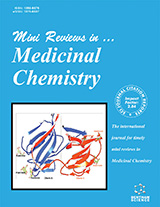Abstract
Leishmaniasis, a group of tropical diseases caused by protozoan parasites of genus Leishmania, is a major health problem worldwide that affects millions of people especially in the developing nations. Generic pentavalent antimonials have been the mainstay for therapy in the endemic regions due to efficacy and cost effectiveness, but the growing incidence of their resistance has seriously hampered their use. In many cases the drugs employed for the treatment are toxic, marginally effective, given by injection and, compromised by the development of resistance. Therefore, the development of new mechanism based safe, effective and affordable chemotherapeutic agents to fight leishmaniasis would be an urgent priority research. The recent researches focused on natural products have shown a wise way to get a true and potentially rich source of drug candidates against leishmaniasis, where alkaloids have been found more effective. The present review briefly illustrates an account on current status of leishmaniasis, life cycle of parasites and biology, synergy of the disease with HIV, therapeutic options available to cure this disease and, highlights why natural products especially alkaloids as folk medicines are so important? Additionally, the outlines for the leishmanicidal activities of various alkaloids including indole, quinoline, isoquinoline, pyrimidine-β-carboline, steroidal and diterpene alkaloids from various plants as well as alkaloids from marine sources have been provided with their mechanistic studies.
Keywords: Leishmaniasis, treatment, natural products and alkaloids




























